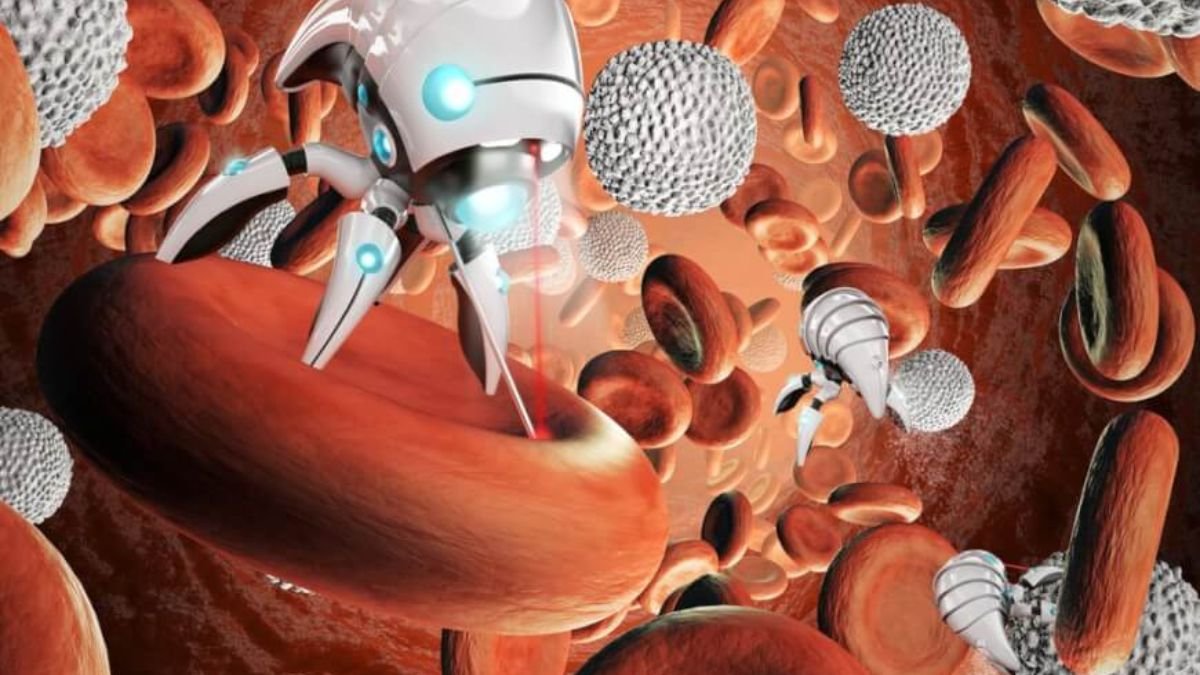Science has always proven that human limitations are only limited Healthcare by our imagination. In the field of medicine, too, several discoveries have been made in the last few decades that have made the impossible possible. One of these revolutionary technologies is nanomedicine.
As the name suggests, this technology is being used in the field of medicine at the “nano” or microscopic level. But did you know that nanomedicine is no longer confined to laboratories? Instead, it is gradually becoming an important part of our everyday health and life.
What is Nanomedicine?
Nanomedicine is the field of science that uses microscopic particles or devices made at the nanometer (one billionth of a meter) level for the identification, prevention, and treatment of diseases.
These nanoparticles are so small that they can easily enter the body’s cells and perform their function there.
In simple terms, nanomedicine is a technology that helps deliver drugs directly to the affected organ or cell – without affecting the entire body. This makes the treatment more effective and precise.
How does Nanomedicine work?
To understand the process of nanomedicine, let’s take a simple example:
Suppose a person has cancer cells in their body. Traditional medicines spread throughout the body, affecting even healthy cells. But nanoparticles prepared under nanomedicine only reach the cancerous cells and release the drug there.
This has two advantages:
The effectiveness of the drug increases.
Side effects are significantly reduced.
This is why nanomedicine is also called “Precision Medicine” – meaning treatment at the right place, in the right amount, and at the right time. The Contribution of Nanomedicine to Everyday Health
Now let’s talk about how this technology is useful in our daily lives and how it has become a reality today, not just a future possibility.
Revolutionizing Cancer Treatment
Nanomedicine has proven most effective in treating complex diseases like cancer. In many countries, nanodrugs like Doxil and Abraxane are now being used, which precisely target cancer cells This technology has significantly reduced the side effects of chemotherapy, such as hair loss, fatigue, and vomiting.
Protection Against Infections and Bacteria
Elements like nano-silver and nano-copper are now being used in masks, sanitizers, and medical devices. They are even more effective than traditional chemicals in killing microorganisms.
Improvements in Vaccination
During the COVID-19 pandemic, nanotechnology-based mRNA vaccines (such as Pfizer-BioNTech and Moderna) saved millions of lives worldwide. This is a prime example of how nanomedicine has become the foundation of global health security.
Advancements in Diagnostic Techniques
Nano-sensors can now detect diseases from even a small amount of blood – whether it’s cancer, diabetes, or heart problems. This allows for early detection and timely treatment.
Use in Skin and Cosmetic Products
The creams, sunscreens, and anti-aging products you use today also utilize nanoparticles to allow them to penetrate deeper into the skin.
The Growing Impact of Nanomedicine in India and the World
Countries like the USA, Japan, South Korea, and Germany are already leaders in nanomedicine research.
India is also rapidly moving forward in this direction.
Institutions like the IITs and AIIMS are conducting nano-based research on diseases like cancer, diabetes, and tuberculosis.
The Indian government’s “National Nanomission” scheme is promoting nano-research in the country. Private companies are also now investing in the manufacturing of nanodrugs.
In the coming years, nanomedicine is going to become an important part of India’s healthcare policy.
Benefits of Nanomedicine
- Precise Treatment (Targeted Therapy): It works only on the affected cells.
- Reduced Side Effects: It does not affect other parts of the body.
- Reduced Dosage: Nanomedicine has a significant effect even in small quantities.
- Faster Recovery: The effects of the treatment are visible quickly.
- Preventive Healthcare: Nano-sensors and monitoring devices can detect diseases in the early stages.
Risks and Challenges Associated with Nanomedicine
While nanomedicine has raised new hopes in the medical world, there are also some challenges that cannot be ignored.
- Safety Concerns: Nanoparticles are very small, so it is not yet clear whether their long-term presence in the body causes any harm.
- Regulations and Policies: Approval processes related to nanomedicine vary from country to country, making global standardization difficult.
- High Cost: Currently, this technology is quite expensive, and its widespread adoption is challenging for every country.
- Social Acceptance: The general public still does not have a complete understanding of nanotechnology, which leads to fear or misconceptions.
The Future Direction: How Nanomedicine Will Redefine Healthcare
In the coming decade, nanomedicine will not be limited to only serious diseases. Its applications will extend to:
- Personal health monitoring,
- Smart drug delivery systems,
- Biosensors, and
- Artificial intelligence-based treatments.
Scientists believe that one day, nanobots will circulate inside the body, automatically identifying and treating diseased cells – making the dream of a “self-healing human body” a reality.
Conclusion
Nanomedicine is an aspect of medical science that will not only help humans fight diseases but also make their lives safer, more precise, and more personalized It is not just a technology, but a step towards a healthcare revolution Today, whether you are in a hospital, buying medicine, or simply using a basic skincare product – nanomedicine has already become a part of your life in some way.
In the future, this technology will not only change the way we treat diseases but also give a new direction to the way we live our lives.
